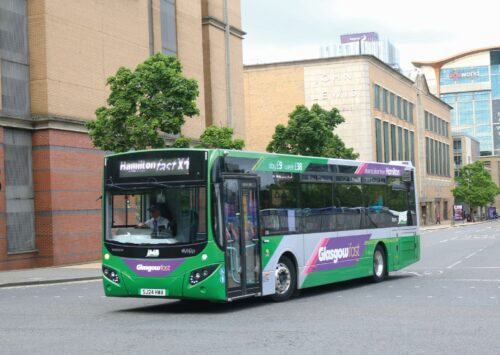
Strathcyle Partnership for Transport’s plans for reshaping its network might not be a cure-all for public transport problems, warns the CPT
The Confederation of Passenger Transport has published its response to the Strathclyde Partnership
for Transport (SPT) Regional Bus Strategy consultation.
According to SPT, the strategy places bus at the heart of Strathclyde’s public transport network, noting 25% of adults in the region use bus at least once a week, and sets out a vision for buses that are more frequent, more reliable, more affordable and easier to use, an aim which SPT proposes to achieve using the franchise model. The consultation, which has now closed, set out a series of 41 measures to achieve the policy goals that SPT believes would be simpler to progress through franchising, including setting minimum levels of service for all town services and key destinations, improved bus priority, extending concessionary fares, decarbonising the bus fleet, and better cross-modal integration. Indicated franchise set-up costs are quoted as being around £15m, with further ongoing annual costs of between £45m and £85m, depending on the speed and scale of measures introduced.
CPT’s Director for Scotland Paul White said: “Bus operators across Strathclyde share SPT’s vision to deliver frequent, reliable, and affordable buses. However, local authority control of buses will not, in isolation, enhance services or encourage any more passengers to catch the bus. The key to increasing passenger numbers is to speed up journeys, tackle congestion and to provide an attractive, accessible, and affordable alternative to the private car. Every passenger who switches from car to bus will cut congestion, contribute to better air quality and deliver a boost to the local economy.
“CPT welcomes SPT’s recognition of the critical role bus plays. However, many of the measures proposed to improve bus, such as enhanced bus priority, accessible bus stops, integrated ticketing, and the creation of a customer charter, can be taken forward without franchising, at potentially less expense, and no increased burden on the taxpayer.”
Research published by CPT found that a 10% increase in bus speeds typically increases passenger demand by 2.5% and reduces the operating costs of buses by 8%, but that if an increase in bus speeds is combined with measures to increase the cost of running a car, passenger demand has the potential to increase by as much as 20%, the equivalent to an extra 26m bus journeys a year across Strathclyde and the South West of Scotland.

